When I was young, what fascinated me most about the outdoors was discovery. The unveiling of a whole teeming world right outside always kept me coming back. One moment I remember fondly was my father showing me a Crayfish for the first time on the shore of Lake Ontario. I couldn't believe that such a strange and fascinating creature with huge pincers and strange long antennae was dwelling in the same place I would go swimming with my family. Interacting with the other organisms I shared space with created a deeper understanding and appreciation for my place in all of it. Since I’ve started working at Nature up North, I have both rediscovered this fascination within myself and seen it within others. If you’d like to entertain that sense within yourself, finding and observing crayfish is a great way to do it!
General Crayfish Catching Guide:
There are two methods I employ in finding wild crayfish, and both have their time and place. It’s best to start by observing passively. One spot I would recommend is the boat launch at Eel Weir State Park. From shore or a few feet away in the water, watch over a clear, rocky, fast-moving spot. Just the other day I saw over five crayfish perched on top of a rock using this method! If you can't find any in the open, then go into their habitat and begin searching by flipping rocks and logs. This method is often necessary to find crayfish, but has the drawback of clouding the water which can hamper your ability to spot them. Once you see a crayfish you can catch it by approaching it from the rear and picking it up from behind the claws. Try to get a secure grip, but make sure you don't injure the crayfish. When you are ready to release the crayfish, simply place it back in the water or the shore near where you found it. While crayfish can survive a long time out of water as long as its gills are wet, it's still best to return them to the water, if that's where you found them.

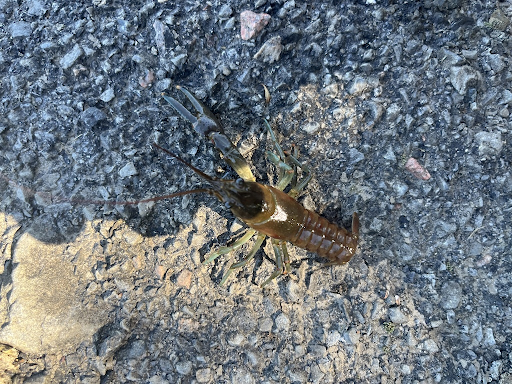
The following are images and brief descriptions of crayfish commonly found in the North Country. Happy Hunting!
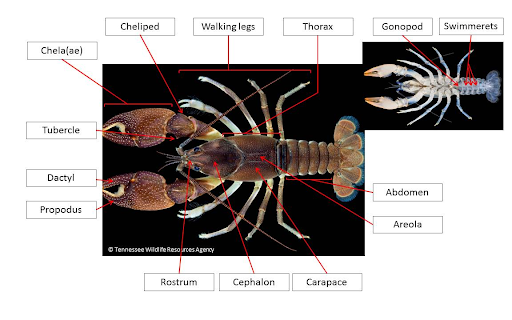
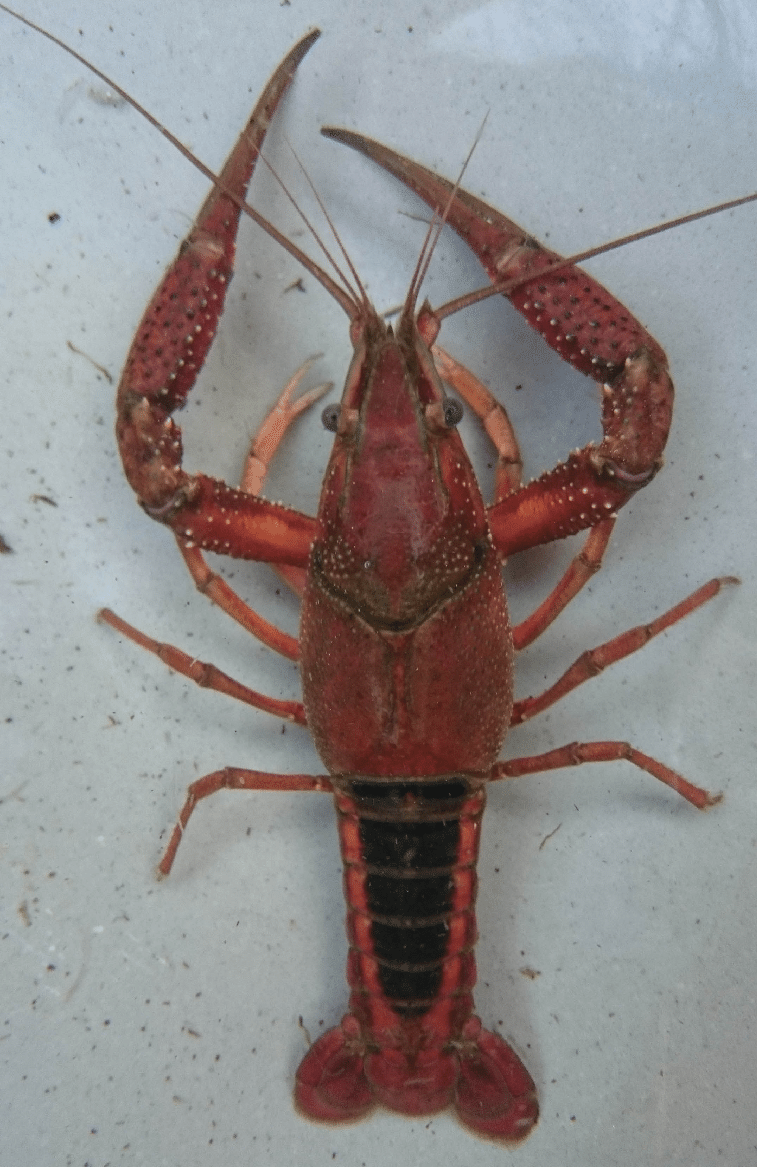
White River Crayfish tend to have Dark Red bodies with a Wedge-shaped Black marking along the tail, but smaller ones can be brown and spotted. Another giveaway is the long narrow shape of their claws, which is distinct from the shorter and fatter claws seen on the other species in the North Country. They also will burrow during dry summer or fall seasons, so check for hills along the shoreline. (USGS White River)
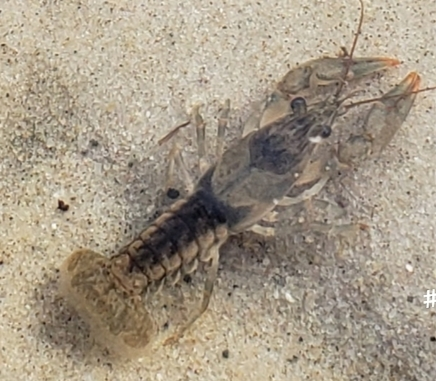
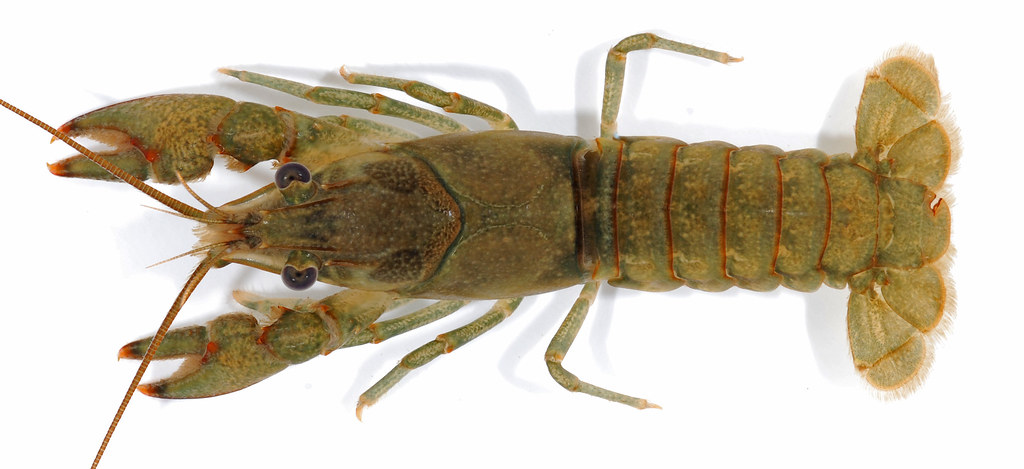
Northern Clearwater Crayfish can be most clearly identified via their Orange Tipped Claws, or Chelae. However, other species like the Allegheny Crayfish and Rusty Crayfish also have orange tips to their claws that can cause confusion. The USGS recommends the following method to differentiate: The coloration of F. propinquus claw tips are generally orangish-brown followed by a pale or yellowish band of color. This differs from F. obscurus claws that are usually tipped with orangish-brown, followed by a dark green-blackish band, and then a pale-yellow band. (USGS Allegheny). They are also smaller on average than most Crayfish found in the North Country.
Northern Clearwater Crayfish are omnivores and are known to eat Zebra Mussels, plants, algae, and small insect larvae. Northern Clearwater Crayfish don’t burrow, meaning they tend to inhabit year round bodies of water. They also tend to prefer to live in swiftly moving bodies of water with rocky substrate. (USGS Northern Clearwater)
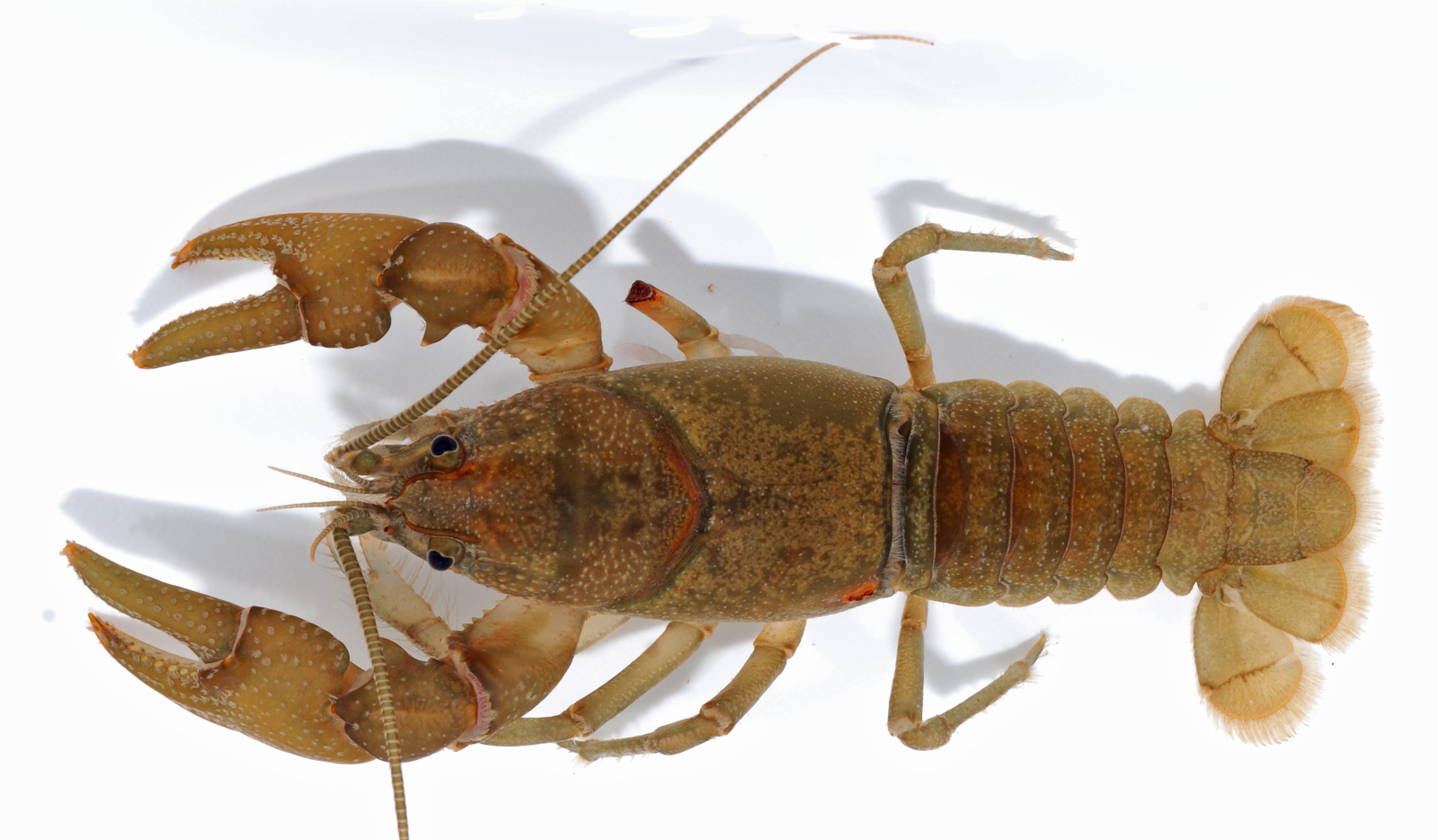
The Eastern Crayfish is another crayfish that prefers fast moving water with rocky substrate, but unlike some other crayfish that prefer those habitats, the Eastern Crayfish is a capable burrower. Eastern Crayfish can dig as deep as one meter by picking up pieces of rock or gravel with its claws. They mate in spring and early summer and the young stay attached to their mother all the way up to the second molt!
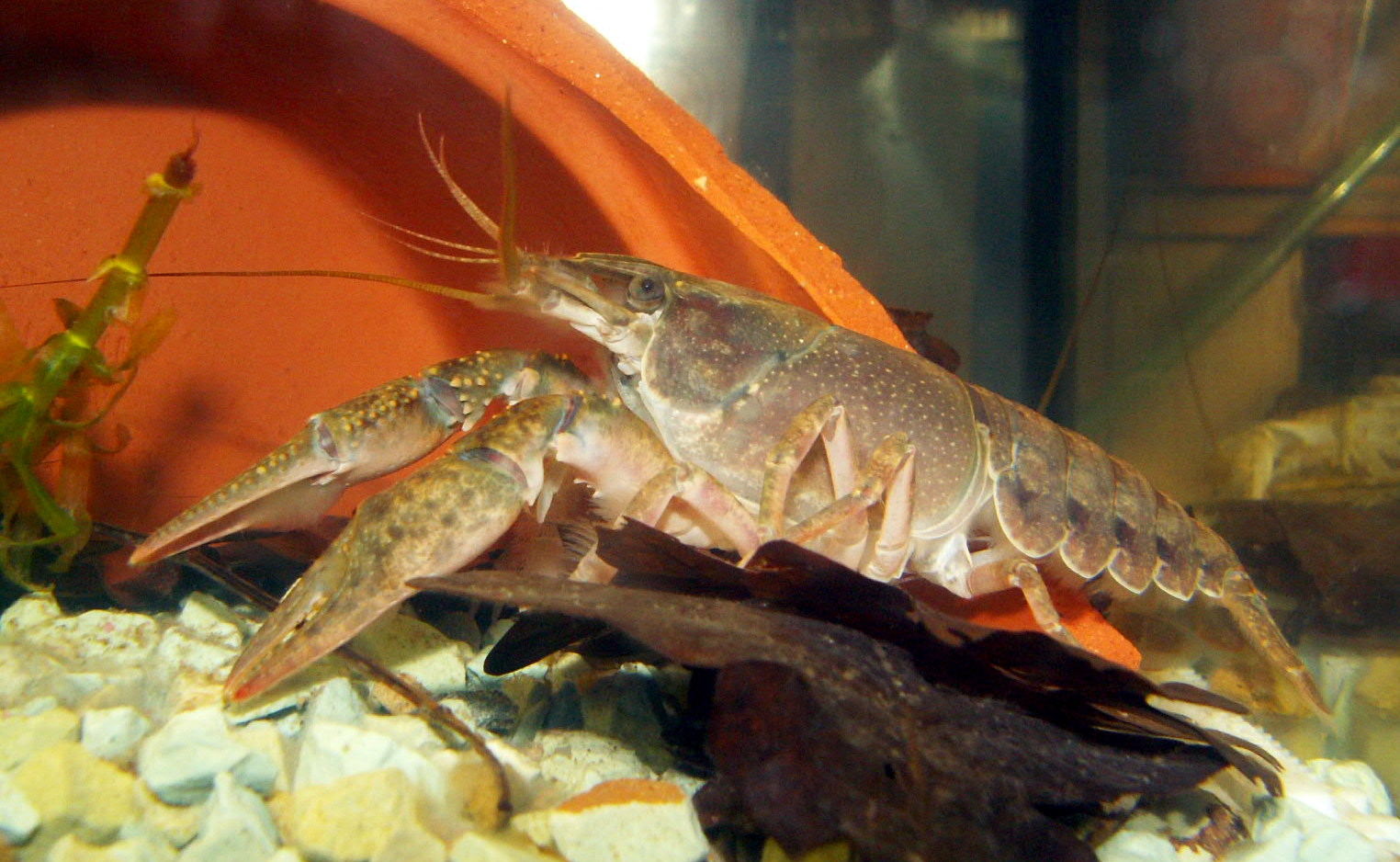
Calico Crayfish can be identified with the pale patterned section along the back of their carapace. They also have orange tips on their pincers like several other species. Unlike most other species around the North Country, the Calico Crayfish prefers muddy, stagnant waters and cannot survive fast moving water. Like White River Crayfish, Calico Crayfish are burrowers, so be sure to check for those tiny hills along the water line. (USGS Calico)
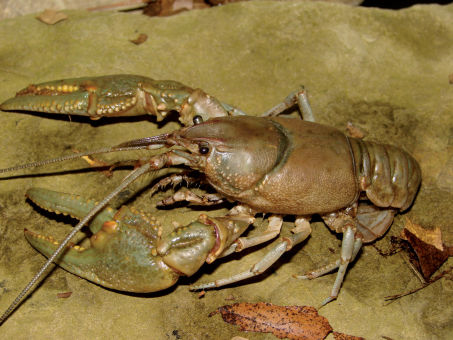
Big Water Crayfish are the largest crayfish found in the North Country reaching carapace lengths over two inches! They can also be identified using their proportionally large and strong claws. Big Water Crayfish prefer rocky fast moving rivers and streams. Their diet consists of Crayfish staples like algae and insects as well as smaller crayfish. (USGS Big Water)
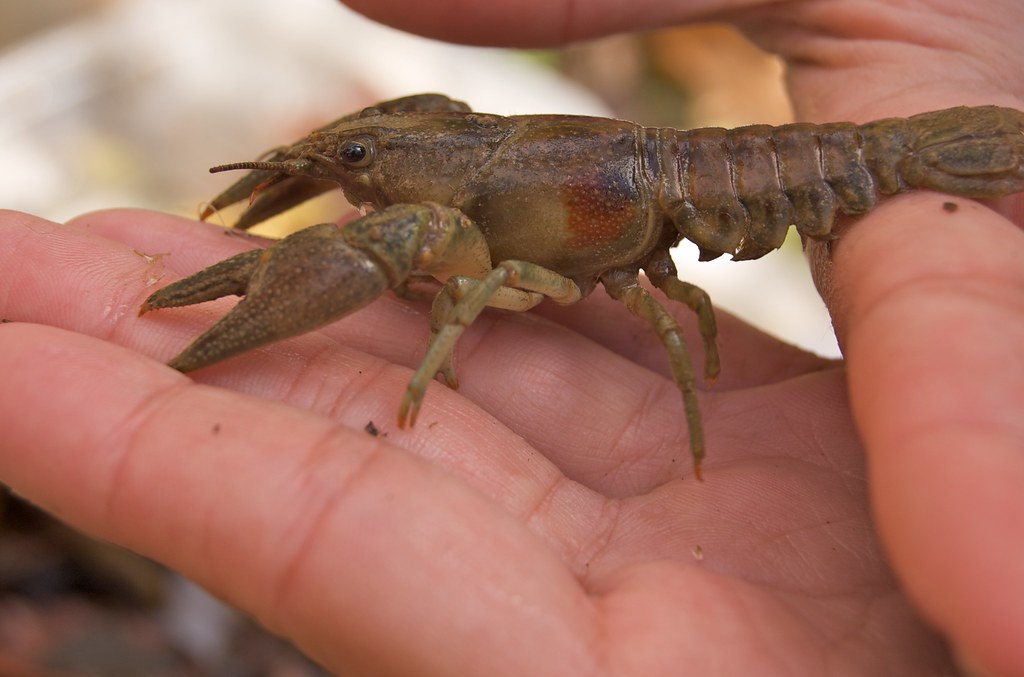
The Rusty Crayfish is currently the only known invasive Crayfish within St. Lawrence County. The Rusty Crayfish is one of the easiest to identify by its rusty colored spot towards the rear of the thorax. It outcompetes native crayfish through its aggressive behavior and a special trait among the female crayfish that allows them to carry reproductive material for extended periods and distances. If you are confident you have found a Rusty Crayfish, please remove it from the habitat and dispose of it.

